Unit 4 Sharing Warming–up and reading 课件(41张PPT)
文档属性
| 名称 | Unit 4 Sharing Warming–up and reading 课件(41张PPT) | 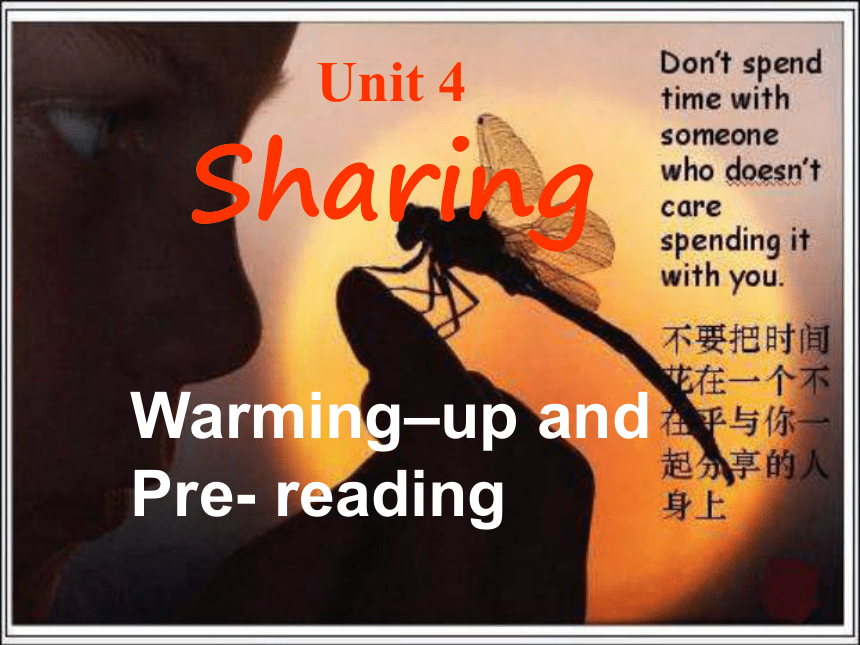 | |
| 格式 | zip | ||
| 文件大小 | 1.7MB | ||
| 资源类型 | 教案 | ||
| 版本资源 | 人教版(新课程标准) | ||
| 科目 | 英语 | ||
| 更新时间 | 2019-11-30 20:40:03 | ||
图片预览






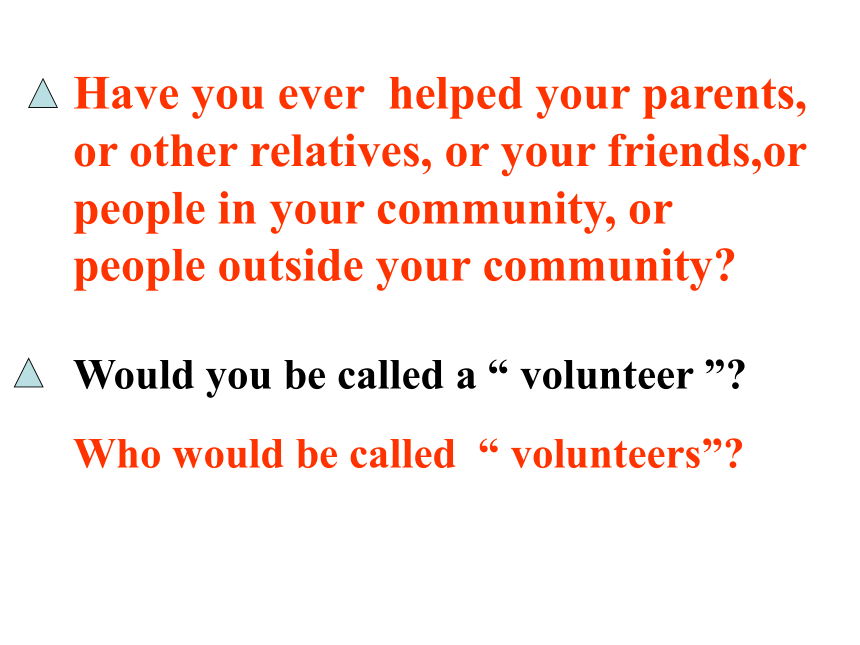
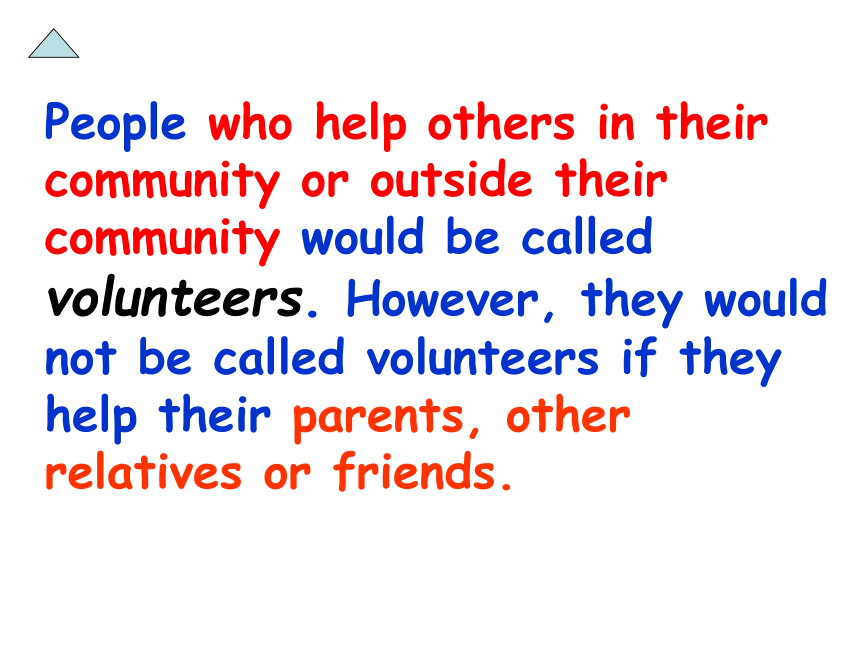

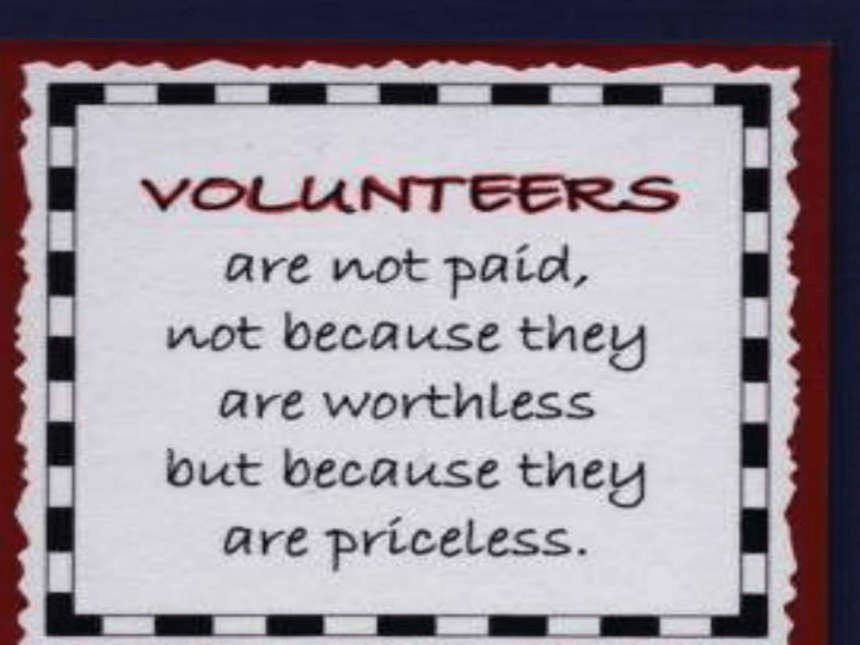
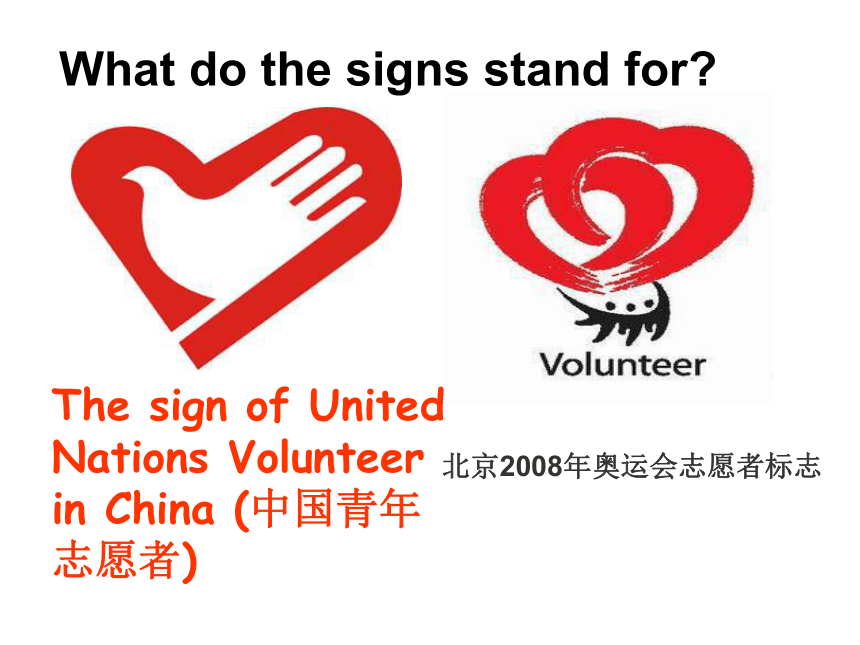

文档简介
课件41张PPT。Unit 4
SharingWarming–up and Pre- readingSharingshare: to have, use, pay, or take part in something with others among a group rather than singly. 1 Children should be told to share their toys.
2 We share the cost of the meal.
3 We all share the responsibility for these
terrible events.
4 It’s always better to share your worries and
problems.把自己的想法、情感、经历告诉…共同承担分摊分享Warning-up and Pre-readingEnjoy what some famouspeople think about SharingAs Kofi Annan, Secretary General of the United Nations said “ … each contribution- no matter how small- can help make a difference.”EnjoyGive roses to others and the lasting fragrance will remain in your hand.If everybody offers a little love, the world will become more beautiful.Have you ever helped your parents, or other relatives, or your friends,or people in your community, or people outside your community? Who would be called “ volunteers”?Would you be called a “ volunteer ”?People who help others in their community or outside their community would be called volunteers. However, they would not be called volunteers if they help their parents, other relatives or friends.The important factors
? not for rewards – esp. money and materials
?Volunteer – not forced to do so
? Not only the person but also the society and the environment benefit from it.
? with participation
The definition of “volunteer”What do the signs stand for?The sign of United Nations Volunteer in China (中国青年志愿者)北京2008年奥运会志愿者标志 March,5th is UNV day.
80,000,000 volunteers
in ChinaDecember,5th is International Volunteer DayWhat are the volunteers doing?fight against the flood and rescue the old and the sickplant trees and protect our environmenthelp the disabledclean the communityEarthquake in WenchuanVolunteerA Letter Home --By Jo
(a volunteer works in
Papua New Guinea)Independent State of Papua New Guinea 巴布亚新几内亚独立国 Do you know where PNG is?Location: situated to the north of Australia
Population: about 5.7 million
Language: English as the official language
Pidgin English as the language for
communication
Economy: a poor country with most people
living in tribal villages and depending
on subsistence farming to make a living.
Education: About 85% of children start
school but only about 60% of these
reach Year 5Captial 莫尔兹比港 Port Moresby PNG’s national flag and national emblem(国徽) 巴布亚在马来语中意为“卷发人”。
16世纪中叶,葡萄牙人来到该岛时,见
当地居民和自然景观很像非洲的几内亚,
故称之为新几内亚. PNG’s paper currencyhouses made of bamboo and grassJo was a volunteer who worked in Papua New Guinea (PNG) for two years.
The following photos were taken by Jo in PNG. Look at the photos and answer the questions. Photos 1 to 3 1 What was Jo's job in PNG?A teacher.2 What kind of students were in her class?Teenage boys. They are poorly dressed. 3 Describe the classrooms.The classrooms are small. They have no windows. They are made of wood and bamboo and have grass roofs. doorwayvillage hut stick outPhotos 4 to 10 1. Jo took many photos of a visit to a student's village. What can you say about the village?The village is very small. It is by a river at the bottom of a valley. It has steep slopes all around it.ScanningDivide it into four parts, and summarize what each part is about. Opening of the letter and introduction to what will be talked about in the passage.Part 1 (Paragraph 1) : The school where Jo worked and Jo’s work at school.
Jo and Jenny visited Tombe’s home in the village.
Closing of the letter.Part 2(Paragraph 2-3):Part 3 (Paragraph 4-8):Part 4 (Paragraph 9): Read the passage carefully to complete the tables below!Reading carefullyEquippedNot equippedTable 1 (about the school)Go to college or workReturn to the villagesYesYesNoNoManyFewConclusion: electricity or waterbushbambooTable 2 (about the life in the village)sticking outInsideplatformfireplacea couple oflaidcoveredHomework 1. Finish Exercise 3 on Page 31.
2. Read the passage again after class and find all the attributive clauses in it.
3. Recite the key sentences in the text.
4. Preparations: Learning about Language on Page 32.
SharingWarming–up and Pre- readingSharingshare: to have, use, pay, or take part in something with others among a group rather than singly. 1 Children should be told to share their toys.
2 We share the cost of the meal.
3 We all share the responsibility for these
terrible events.
4 It’s always better to share your worries and
problems.把自己的想法、情感、经历告诉…共同承担分摊分享Warning-up and Pre-readingEnjoy what some famouspeople think about SharingAs Kofi Annan, Secretary General of the United Nations said “ … each contribution- no matter how small- can help make a difference.”EnjoyGive roses to others and the lasting fragrance will remain in your hand.If everybody offers a little love, the world will become more beautiful.Have you ever helped your parents, or other relatives, or your friends,or people in your community, or people outside your community? Who would be called “ volunteers”?Would you be called a “ volunteer ”?People who help others in their community or outside their community would be called volunteers. However, they would not be called volunteers if they help their parents, other relatives or friends.The important factors
? not for rewards – esp. money and materials
?Volunteer – not forced to do so
? Not only the person but also the society and the environment benefit from it.
? with participation
The definition of “volunteer”What do the signs stand for?The sign of United Nations Volunteer in China (中国青年志愿者)北京2008年奥运会志愿者标志 March,5th is UNV day.
80,000,000 volunteers
in ChinaDecember,5th is International Volunteer DayWhat are the volunteers doing?fight against the flood and rescue the old and the sickplant trees and protect our environmenthelp the disabledclean the communityEarthquake in WenchuanVolunteerA Letter Home --By Jo
(a volunteer works in
Papua New Guinea)Independent State of Papua New Guinea 巴布亚新几内亚独立国 Do you know where PNG is?Location: situated to the north of Australia
Population: about 5.7 million
Language: English as the official language
Pidgin English as the language for
communication
Economy: a poor country with most people
living in tribal villages and depending
on subsistence farming to make a living.
Education: About 85% of children start
school but only about 60% of these
reach Year 5Captial 莫尔兹比港 Port Moresby PNG’s national flag and national emblem(国徽) 巴布亚在马来语中意为“卷发人”。
16世纪中叶,葡萄牙人来到该岛时,见
当地居民和自然景观很像非洲的几内亚,
故称之为新几内亚. PNG’s paper currencyhouses made of bamboo and grassJo was a volunteer who worked in Papua New Guinea (PNG) for two years.
The following photos were taken by Jo in PNG. Look at the photos and answer the questions. Photos 1 to 3 1 What was Jo's job in PNG?A teacher.2 What kind of students were in her class?Teenage boys. They are poorly dressed. 3 Describe the classrooms.The classrooms are small. They have no windows. They are made of wood and bamboo and have grass roofs. doorwayvillage hut stick outPhotos 4 to 10 1. Jo took many photos of a visit to a student's village. What can you say about the village?The village is very small. It is by a river at the bottom of a valley. It has steep slopes all around it.ScanningDivide it into four parts, and summarize what each part is about. Opening of the letter and introduction to what will be talked about in the passage.Part 1 (Paragraph 1) : The school where Jo worked and Jo’s work at school.
Jo and Jenny visited Tombe’s home in the village.
Closing of the letter.Part 2(Paragraph 2-3):Part 3 (Paragraph 4-8):Part 4 (Paragraph 9): Read the passage carefully to complete the tables below!Reading carefullyEquippedNot equippedTable 1 (about the school)Go to college or workReturn to the villagesYesYesNoNoManyFewConclusion: electricity or waterbushbambooTable 2 (about the life in the village)sticking outInsideplatformfireplacea couple oflaidcoveredHomework 1. Finish Exercise 3 on Page 31.
2. Read the passage again after class and find all the attributive clauses in it.
3. Recite the key sentences in the text.
4. Preparations: Learning about Language on Page 32.
